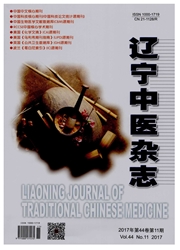

 中文摘要:
中文摘要:
中风后情志障碍严重影响到患者身心康复。对它的基础与临床研究日益增多,但是对不同情志障碍的阶段性发展的研究与报道并不多。现代医学常将它分为中风后抑郁与中风后焦虑,中医学则认为常见的病理情志包括恐、忧、悲、怒,并且通常按照此顺序先后出现。这种转化的中医理论基础主要是中风后患者气机变化,但现代医学机理并不明确。从生物学的角度,中风后情志障碍的发生与中风时机体生物胺胺含量的下降、Hcy水平升高及炎症反应的激活有关;而反应性机制认为相关事件作为刺激因素引起机体产生一系列的连锁反应,从而导致了中风后情志的转化。文章将从中医和现代医学的角度分别探讨中风后情志障碍的阶段性发展。
 英文摘要:
英文摘要:
Post-stroke emotional disorders seriously affect the physical and psychological rehabilitation of patients. Basic and clinical research is increasing,but there is not many studies and reports for different stages of development of post-stroke emotional disorders. Modern medicine often divides it into post-stroke depression( PSD) and post-stroke anxiety( PSA). Traditional Chinese medicine( TCM) advocates that common pathological emotions including fear,worry,sadness,anger; and that they usually emerge in this order. The TCM theoretical basis of this transformation is mainly come from the qi-activity change of stroke patients,while the modern medicine mechanism is not clear. From the perspective from biology,the occurrence of post-stroke emotional disorders is related to the decrease of biogenic amines,the increase of Hcy levels and activation of inflammation;while the reaction mechanisms deemed relevant event as a stimulus causing the body to produce a series of chain reaction that led to the transformation of post-stroke emotion. This paper would discuss the phased development of post-stroke emotional disorders from points of TCM and modern medicine.
 同期刊论文项目
同期刊论文项目
 同项目期刊论文
同项目期刊论文
 期刊信息
期刊信息
